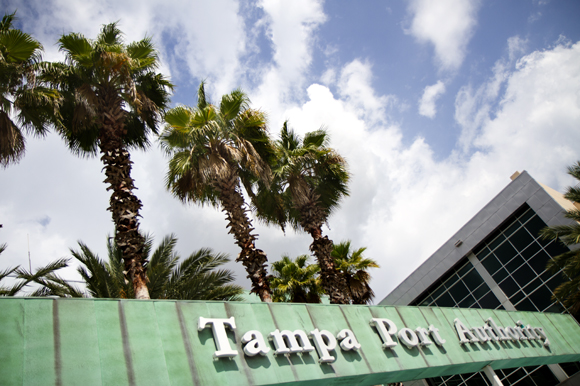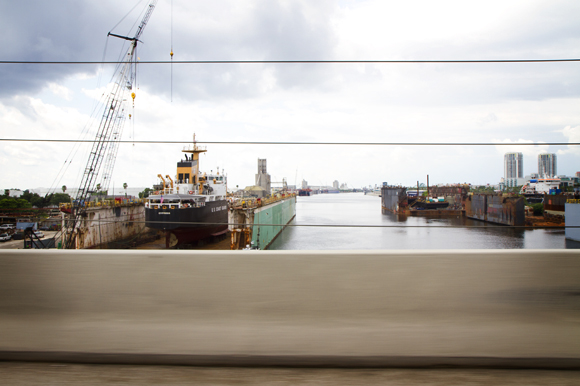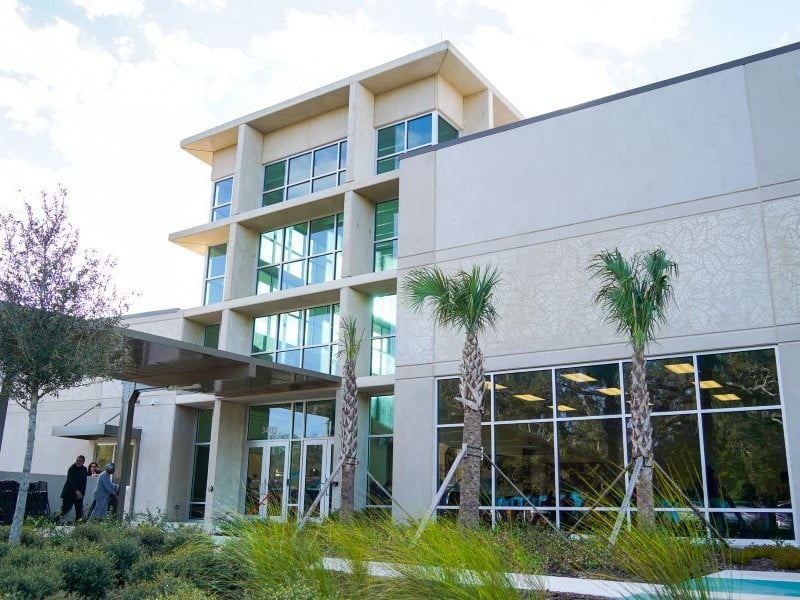Port Of Tampa Expands Trade Routes To The World
Expansion at the Port of Tampa is underway in anticipation of the ongoing widening of the Panama Canal. With the expansion will come new trade routes and more efficient services that will benefit the Tampa Bay region by making it easier to import needed products and export raw materials and goods manufactured here.
Sounds of industrial construction echo around a temporarily closed-off portion of 7th Avenue, an Ybor City street better known for the clinking of drinks and sauced-up laughter on a typical Friday or Saturday night.
The seemingly out-of-place banging and thudding noises emerging from looming concrete shadows may be momentarily annoying for the East Tampa neighborhood and visiting party-goers, but they also are welcome signs of growth for the Port of Tampa, the largest and deepest port in Florida.
This scene of mini-chaos, besides creating a detour on the way to Tampa’s Cigar City, means a direct route from the Port to the region’s Interstate highway system. Called the I-4/Selmon Crosstown Connector, it is being constructed by the Florida Department of Transportation (FDOT).
The Crosstown project should be completed in the summer of 2013, says John Thorington, the Port’s senior director of communication. The new addition will allow a container truck leaving the Port to access the Interstate system directly through a dedicated truck-only lane, making travel more efficient for truckers and safer for visitors and residents of Ybor.
The project is scheduled to be completed a year before the newly expanded Panama Canal opens. Once the Canal is finished, ships that were once too large to pass through the old Canal will have access to ports on either side of Central America without having to find a longer, alternative route, allowing for more trade for various economies.
“Basically, all of the container traffic that moves between the port and Orlando will go on that truck-access elevated road with basically no stop light at all,” says Wade Elliott, director of marketing for the port. “That will make it a lot more efficient.”
Expanding Trade Routes And Port Businesses
In July, the Tampa Port Authority renewed an agreement with the Panama Canal Authority called the Memorandum of Understanding, a partnership that has united the two ports since 2005. The renewal of this partnership will help joint marketing between the two ports as well as boost trade between Asia and the U.S. Gulf coast.
Over the next few years, the Port of Tampa is anticipating a significant amount of trade expansion, particularly with Asia and Latin America, increasing the Tampa Bay region’s ability to be more competitive globally in both importing and exporting, and thus enabling the greater sale and shipping of raw materials and manufactured goods.
In November 2010, a container service at the Port named Zim American Integrated Shipping expanded its South America express service and added a new direct-connection to Tampa from Brazil and Venezuela. In January 2011, Zim American started a Mexico to Tampa express service.
This latest service means weekly sailings from the Port of Vera Cruz and Altamira, Mexico. Both connect to the Zim Global Network hub in Kingston, Jamaica and will allow trade with markets in Asia and the Caribbean.
Containers: The Main Way To Trade
According to Elliott, the container business at the Port of Tampa has one of the highest economic values of any Port activity.
“The types of products that move in containers vary from anything from food and consumer goods to industrial goods, you name it,” explains Elliott. “So, for consumers, you’ll have more competitive prices when you shop, and for exporters, it means that producers and manufacturers can serve their export customers more competitively.”
Shipping containers are referred to as “twenty-foot equivalent units” (TEUs), and are the most common way that products varying from bananas to car parts are shipped between ports. Between January and March of this year, 15,107 net tons of TEUs moved through the Port of Tampa, up 49 percent from the same time period in 2010.
A typical container ship, one that can pass through the current Panama Canal, is capable of transporting between 3,001 and 5,100 TEUs. The ships that will be able to fit through the newly expanded Panama Canal will be capable of holding 5,101 to 14,500 TEUs.
“Last year we extended the dock and added additional container storage space,” says Elliott. “We now have three container Gantry cranes on the terminal and we’re well-positioned for new services and trade expansion that we expect is going to come over the next few years.”
On July 19, the Tampa Port Authority’s governing board reached an agreement with FDOT that will allow $6 million toward railroad construction and improvements in the port’s busiest container traffic area, Hooker’s Point.
You Get The Port You Pay For
So far, the port has invested $70 million into the expansion of the container terminal infrastructure and cargo facilities.
“The Tampa Port Authority has invested very strategically in its container expansion, building the project in phases to meet growing market demand,” says Thorington.
Funding comes from several sources, mostly from the Tampa Port Authority‘s financial resources, but also from state and federal support for specific capital projects.
“Over the next several years, as we end up quadrupling the capacity with new docks and an expanded container yard, there is going to be another $117 million to be invested,” explains Elliott.
Once completed, the container yard will stretch across 160 acres. This land is already owned by the Tampa Port Authority and will be ready to be developed without any dredging. The expanded container storage capacity should allow the Port of Tampa to comfortably handle all of the long-term growth that is anticipated for Central Florida over the next 20 years, says Elliott.
Matthew Wiley is a freelance journalist and University of South Florida grad residing alongside the Hillsborough River in the Seminole Heights neighborhood of Tampa. He spends his free time skateboarding around Tampa Bay and pondering the next step in his journalism career. Comments? Contact 83 Degrees.














